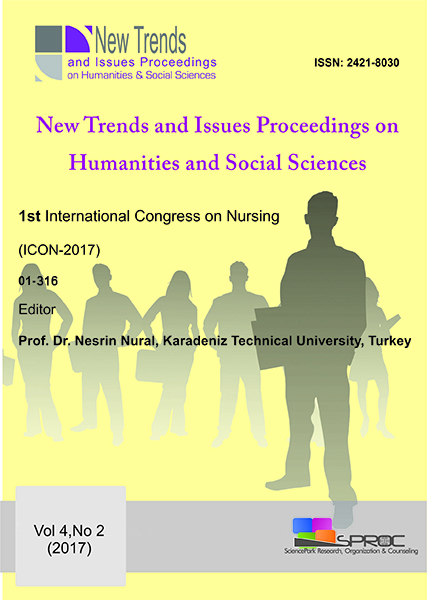Effect of childbirth education classes on prenatal attachment
Main Article Content
Abstract
The childbirth education classes are a routine service in the developed countries, in order to inform the parents about the healthy development of the baby and to prepare the mother and father candidates in the birth and to start the new routine in the developing countries. This study was conducted to determine the effect of childbirth education classes on prenatal attachment.This descriptive casecontrol group research has been carried out between July-December 2016. The sample group consisted of a total of 246 pregnant women, 113 of whom were in the case group (participated in childbirth education classes) and 133 of whom were in the control group (didn't participated in childbirth education classes). In collecting the data, "Personal Information Form" and "Prenatal Attachment Inventory (PAI)" were used. The data of the case group were collected after the training was over. SPSS 15.0 statistical package program was used in the analysis of the data.The mean age of the case group was 25.36 ± 4.47 and the control group was 26.87 ± 5.47 in the study. It was determined that 23.9% of the pregnant women in the case group had graduated from secondary school, 84.1% did not work, 74.3% were three trimester, and 86.7% were planned pregnancies. It was determined that 21.1% of the pregnant women in the control group had graduated from secondary school, 87.2% did not work, 91.7% were three trimester and 79.7% had planned pregnancy. No statistically significant difference was found between the case and control groups in terms of descriptive and obstetric characteristics (p> 0.05). The mean PAI score of the case group was 38.30 ± 9.64 and the control group was 34.10 ± 10.52, and the difference was statistically significant (p = 0.001). It was determined that the prenatal attacment levels of the pregnants participating in the childbirth education class were higher.
Keywords: Prenatal attachment; childbirth education class; nursing.
Downloads
Article Details
- Authors retain copyright and grant the journal right of first publication with the work simultaneously licensed under a Creative Commons Attribution License that allows others to share the work with an acknowledgement of the work's authorship and initial publication in this journal.
- Authors are able to enter into separate, additional contractual arrangements for the non-exclusive distribution of the journal's published version of the work (e.g., post it to an institutional repository or publish it in a book), with an acknowledgement of its initial publication in this journal.
- Authors are permitted and encouraged to post their work online (e.g., in institutional repositories or on their website) prior to and during the submission process, as it can lead to productive exchanges, as well as earlier and greater citation of published work (See The Effect of Open Access).
